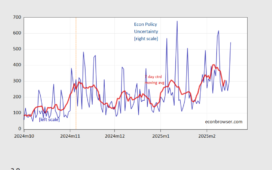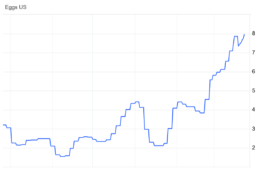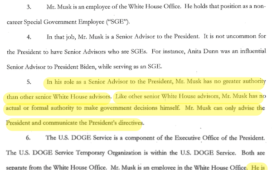The Wall Street Journal had an important article over the weekend on how private equity has become and is set to remain a money pit, at least as long as interest rates remain high.
Public pension funds and other investors dutifully paid up, double pronto, when they received capital calls from private equity general partners; otherwise these so-called limited partners faced the liquidation of all funds they had invested so far.
But in the typical sort of “heads I win, tails you lose” private equity arrangement, private equity kingpins face no penalty for refusing to sell companies in their fund portfolios because the prices on offer would not be very good. One big reason for wanting to avoid that sort of recognition event is that it would call into question the values of many, if not all, of the other companies in their portfolio. Recall that private equity is the only investment strategy where the fund manager gets to set the value of its holdings, and then only quarterly; all others require independent valuations, typically monthly if not daily.
We’ve written before about how private equity funds sometimes do not sell their tail-end holdings and we have not gotten good explanations when the amounts are not all that large. Even if there was a big loss on the final bits, the investors have long ago moved on to newer funds and won’t mind some sort of writedown, particularly since the computation of IRR (a misleading but preferred metric) would understate the impact. For instance, out of CalPERS’ 357 funds, 19 are for vintage years 2004 or earlier.
But recall pension funds in particular have actuarially-estimated payout schedules to meet. In the stone ages, they used to buy bonds and match the maturity to expected obligations. But then the Department of Labor in 1976 changed its interpretation of what the prudent man rule meant, allowing funds to look at risk on a portfolio rather than an investment-by-investment basis. This revision was the direct result of venture capital lobbying.
And then in the early 1990s, Christine Todd Whitman set out to underfund New Jersey pensions by making unduly low contributions on a current basis. This took the growing practice of expecting Mr. Market to make up for less than full contributions to new heights.
To summarize many many posts, in the post crisis, super-low interest rate era, many pensions saw their underfunding get worse as market returns generally fell. They piled into what seemed to be the highest return option, private equity. But as academic studies increasingly showed, since 2006 if not earlier, private equity properly measured was not outperforming stocks. Yet the rule of thumb had been that private equity needed to outperform equities by at least 300 basis points (3%) to compensate for its greater risks: illiquidity and leverage. Compliant consultants helped public pension funds like CalPERS to rejigger their benchmarks, including lowering the risk premiums, to make investing in private equity look attractive.
And now illiquidity risk is biting in a big way. Pension funds are scrambling to make up for the distributions they expected to get from maturing private equity funds but are not taking place. That often includes, as the Journal describes, borrowing, as in paying interest to get cash to meet obligations. Although the article does not say so, it is a pretty sure bet that these interest costs are not being netted against private equity returns, even though private equity shortfalls are the cause of the cash need. The other main approach for dealing with the cash crunch is to sell private equity ho
From the Journal in Pensions Piled Into Private Equity. Now They Can’t Get Out:
Private-equity and pension funds seemed like a match made in heaven…
Now the honeymoon is over. The payouts have dried up, creating an expensive problem for investment managers overseeing the savings of workers retired from big corporations and state and city governments.
To keep benefit checks coming on time, those managers are unloading investments on the cheap or turning to borrowing—costly measures that eat into returns. California’s worker pension, the nation’s largest, will be paying more money into its private-equity portfolio than it receives from those investments for eight years in a row. The engine maker Cummins took a 4.4% loss in its U.K. pension last year, in large part because it sold private assets at a discount.
The Journal describes how public pension funds have on average 14% of their assets invested in private equity and private pensions, about 13%. A chart shows how that percentage has increased smartly since 2000.
Remarkably, the Journal points out that the fund valuations can be, erm, permissive:
But as private equity has grown, its lead over traditional stocks has narrowed. And during the decade before the investments pay out, it can be hard to trust interim estimates provided by fee-seeking managers.
The article describes private equity funds as expected to return the money after ten years. While that is technically accurate, it is a bit misleading. Prototypically, funds spend the first five years putting the money to work and then the next five selling their holdings. If they get a hot deal early, they could conceivably cash out by year 3. So on average, the investor funds are outstanding for five years.
Back to the Journal:
Nearly half of private-equity investors surveyed by the investment firm Coller Capital earlier this year said they had money tied up in so-called zombie funds—private-equity funds that didn’t pay out on the expected timetable, leaving investors in limbo.
So pension funds are selling private-equity fund stakes secondhand—often taking a financial hit in the process. Secondary-market buyers last year paid an average of 85% of the value the assets were assigned three to six months before the sale, according to Jefferies Financial Group. Secondhand sales by private-equity investors increased 7% to $60 billion last year….
Some pension funds are borrowing to access cash. Both Calpers and the $333 billion pension serving California teachers have approved plans to take out loans equivalent to 5% and 10% of fund holdings, respectively.
The Alaska Permanent Fund Corp. has received cash from a different kind of borrowing: private-equity managers making payouts that come not from investment gains but from loans they have taken out to appease cash-starved pensions and other investors. That is frustrating for the investment chief, Marcus Frampton. He estimated that his fund, which invests mineral revenue and other state money, could borrow on its own at lower cost. So far, this practice doesn’t appear to be widespread
The Journal mentions in passing that CalPERS is increasing its private equity allocation to 17%, with nary a thought as to whether it needs to rethink its benchmarks and its fealty to private equity in light of zombification.
An interesting sign of the times is the tenor of comments on this piece. In the past, articles on public pension fund misadventures in private equity would generate reader criticism of dumb overpaid public officials and reflexive cheerleading for private equity. The 303 comments on this article (a very healthy number) were overwhelmingly skeptical of the one-times masters of the universe. Some examples:
James Singer
The roach motel aspect of PE comes to the forefront.
Of course PE managers themselves are in the Denial phase as Glen Garry Glen Ross storylines play out.
The world is coming for the high profile billionaire financiers but that is for another time.Michael Young (emphasis original)
It’s one thing for pension funds to invest in equities that provide returns and gains over time. It is quite another for pension funds to commit to invest equity in future years without even knowing what that equity will buy…and then to compound the problem by going into debt to pay for those future commitments. This is or should be called breach of fiduciary duty and the fiduciaries/trustees should be held personally liable. D&O insurance should not cover this form of breach.
Peter S
The big scam from the Leveraged Buyout Funds ( renamed Private Equity) is their self determination of returns during the interim period.
With this allowance, they make their returns look smoother
( enhancing their “Sharp ratio “ ) and even higher.
As interest rates have likely entered a very long term period of rising , similar to the period 1948-1982, these firms that rely on borrowing ( leverage ) to buyout companies will have a heavy headwind against their returns.Robert Weinberger
Private equity has damaged more industries, especially healthcare, than ever imagined. They saddle their acquisitions with heavy debt recovering their capital yet causing bankruptcies. This is capitalism gone wild. Legislation is needed to to slam these vultures.
Roy Laferriere
I missed any discussion in the article about how these problems affect the KKRs and Blackstones of the space. My impression is they blithely continue to reap their fees, rain or shine on the investor’s situation.
Stephpen Siu
When something looks too good to be true, it’s probably too good to be true.
Privates may have juicy returns on the headline, but give up in transparency and liquidity in the fine print.
While it is good to see awareness of the considerable problems with private equity (for those not involved in the looting), in much the same way that the US and Europe suffer from a lack of political accountability, so to does the investment world. I am told big endowments don’t even do due diligence before investing in private equity funds, as if being in the club means no pointed questions. Admittedly, universities have a wee problem in that they are soliciting donations from the very same rich people who are running these investment pools. But hardly anyone even acknowledges this monster conflict of interest exists, let alone comes up with feeble attempts at fixes.
Bizarrely, powerful unions like SEIU bizarrely defend CalPERS, despite its history of corruption and incompetence. Even though the State of California backstops state pensions, and (as we have described long form), CalPERS has a defective governance structure that makes it answerable to no one, legislators are afraid to implement even the modest check of an inspector general.
So expect things to have to get a lot worse before there is any hope that they might get better.













